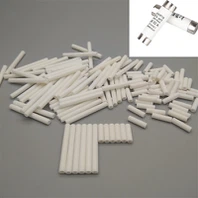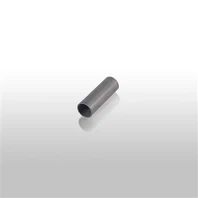Ceramic metallization is a crucial process in the field of materials science and engineering, where ceramics, known for their excellent electrical insulation and thermal stability, are coated with metallic layers to enhance their conductivity and enable integration into electronic and electrical systems.
Surface Treatment
The ceramic metallization process typically involves several key steps. To remove impurities and create a suitable bonding surface, the ceramic substrate must first undergo cleaning and surface treatment. This step is critical for ensuring proper adhesion between the ceramic and the metallic layer. Common ceramics used in this process include alumina (Al2O3), zirconia (ZrO2), and silicon nitride (Si3N4) due to their desirable properties.
Deposition of Metallic Layer
After substrate preparation, a thin metallic layer is deposited onto the ceramic surface. Various deposition techniques can be employed, including physical vapor deposition (PVD) and chemical vapor deposition (CVD). PVD methods, such as sputtering or evaporation, involve the physical transfer of metal atoms from a source material to the ceramic surface under vacuum conditions. CVD, on the other hand, relies on chemical reactions to form a metallic layer on the substrate.
The choice of metal for deposition depends on the specific application and desired properties. Common metals used in ceramic metallization include gold, silver, copper, and aluminum. Gold is favored for its excellent conductivity and resistance to corrosion, making it suitable for high-reliability applications. Silver offers high conductivity but may be prone to tarnishing over time. Copper is cost-effective but may require barrier layers to prevent diffusion into the ceramic. Aluminum is commonly used for its affordability and compatibility with silicon-based ceramics.
Patterning
Once the metallic layer is deposited, a pattern is defined using photolithography or other patterning techniques. This involves applying a photoresist material to the metal-coated ceramic, exposing it to light through a mask, and then developing the pattern. The exposed metal is subsequently etched away, leaving the desired metallized pattern on the ceramic surface.
Post-Processing
The final step involves post-processing to ensure the integrity and durability of the metallized ceramic. This may include annealing to enhance adhesion, the application of protective coatings to prevent oxidation, and additional treatments to meet specific performance requirements.
Ceramic metallization is an important part of making high-tech electronics because it lets ceramic materials be used in circuits and systems that need to conduct electricity well. This process continues to evolve with ongoing research focused on improving adhesion, conductivity, and overall performance, contributing to the advancement of electronic and electrical technologies.




